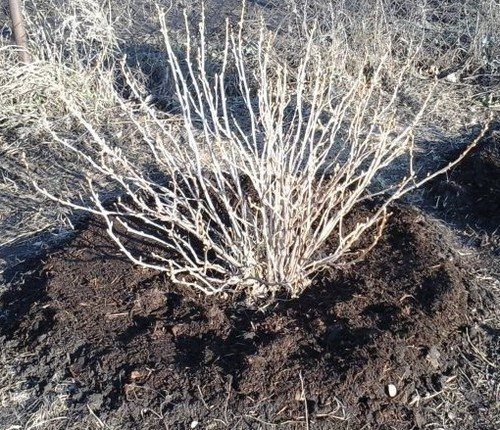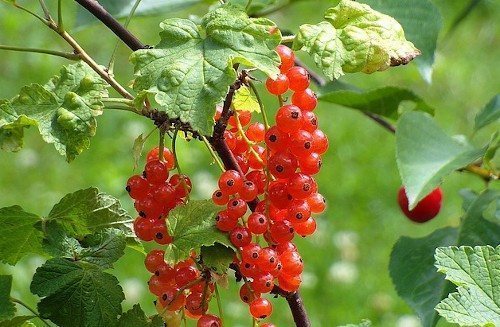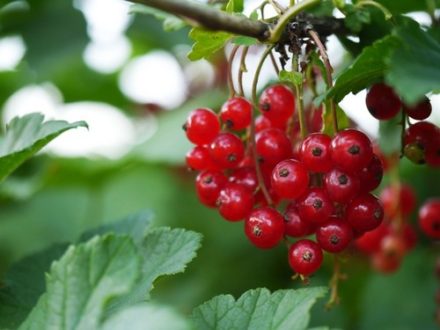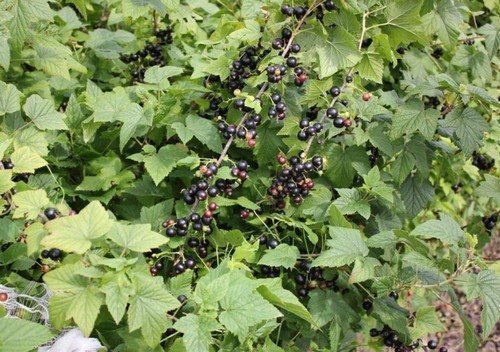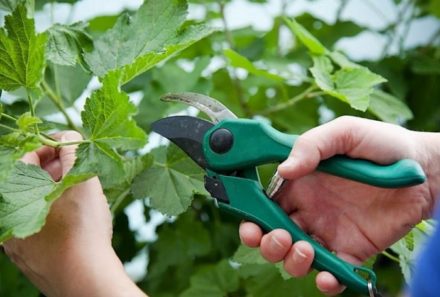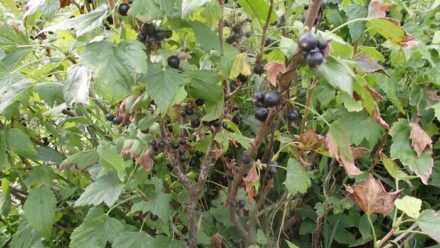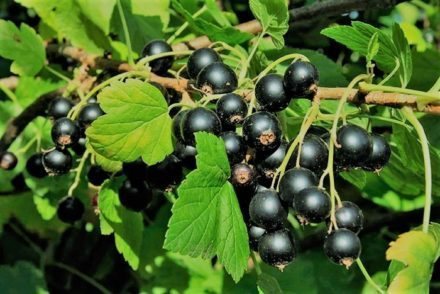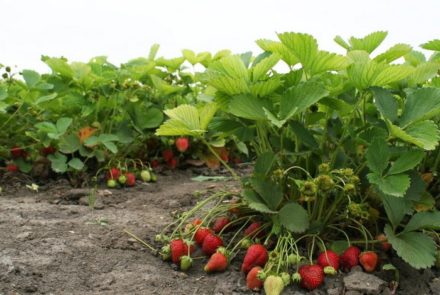Autumn fertilizing for currants is an extremely important and mandatory procedure. Fruiting took a lot of strength and energy from the bushes. The currants have weakened and may not tolerate cold weather. Timely applied fertilizers will restore energy balance, help survive winter frosts and prepare the bushes for the new season.
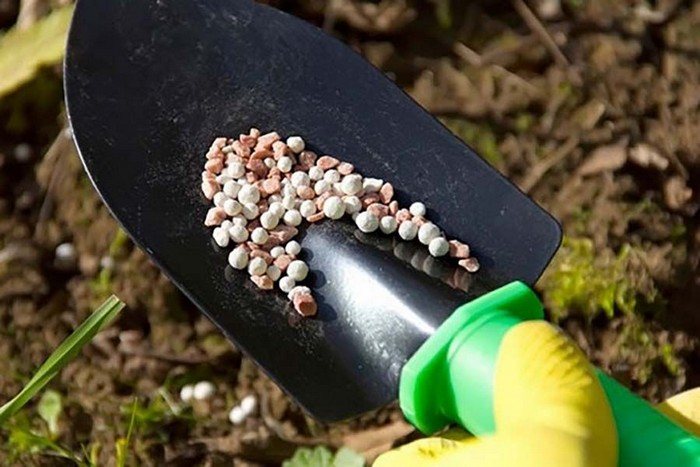
Timing of autumn feeding
Feeding in autumn consists of three stages. The timing of each varies depending on the region where the berry bush grows.
Dates:
- the first stage - immediately after harvesting;
- the second stage - 20–30 days before the first frost, that is, at the end of October - beginning of November;
- the third stage is the application of compost or manure.
The timing of the second stage is very important. When persistent cold and even frosts arrive, there is no point in introducing fertilizers into frozen soil. The bulk of valuable microelements will not reach the root system. And a plant in hibernation does not absorb valuable microelements.
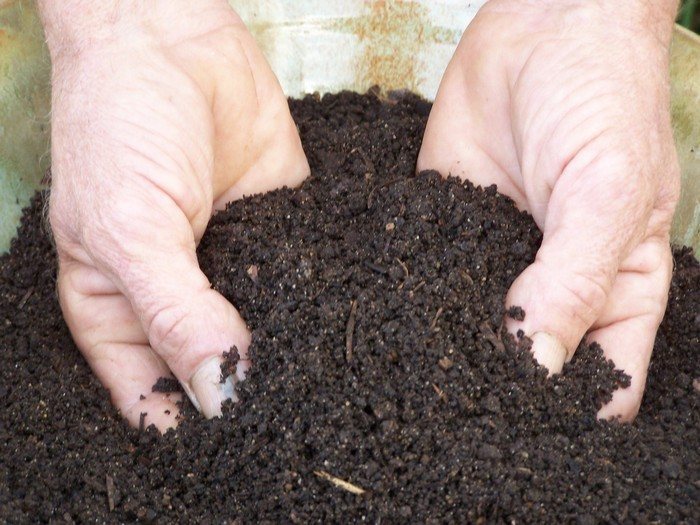
At the third stage, which takes place in December, fertilizers containing nitrogen are introduced. Although fertilizing with nitrogen in the fall is not recommended, by December it will have evaporated, and fertilizing is not prohibited.
Important recommendations for autumn feeding
An agrotechnical event will be beneficial if you listen to the advice of experienced gardeners on how to carry it out.
Recommendations:
- Before fertilizing with any fertilizer, water the soil under the bushes.With this approach, the nutrients will reach the roots without any problems, and the plant will not suffer burns or other injuries.
- It is necessary to observe the dosage of the drug and the consumption rate per feeding.
- The appearance of the bush will tell you which microelements are missing in the soil. With a lack of phosphorus, the foliage darkens and then falls off. Low quality and quantity of the crop, its poor storage indicate potassium deficiency.
Excess nutrients are even more dangerous. Especially an excess of nitrogen, which contributes to the accumulation of dangerous nitrates.
- When applying potassium-phosphorus fertilizers, the winter hardiness of berry bushes significantly increases.
- Dry fertilizers are applied during digging. This ensures that sufficient nutrients reach the soil. Dry fertilizers are placed around the perimeter of the tree trunk circle, since their contact with the trunk and root processes is unacceptable.
- Organic matter is introduced at 28 cm (bayonet of a shovel) and deeper. Otherwise, fertilizers are dangerous.
- Fertilizers are applied in the early morning or late evening, when the sun disappears below the horizon.
- The usual norm for an adult currant bush is 10 liters of liquid fertilizer.
- The desired procedure after fertilizing is mulching. They use sawdust, moss, and dry leaves.
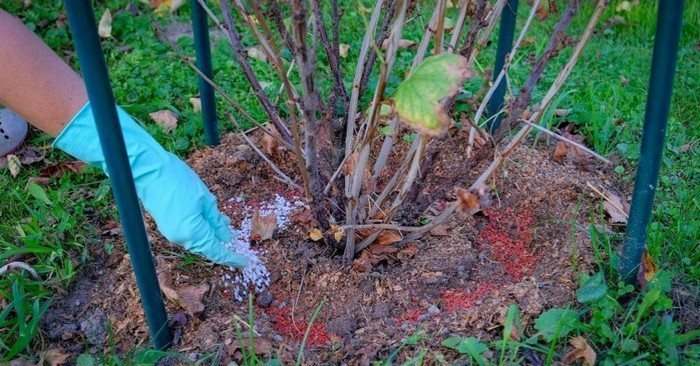
With proper and timely application of fertilizing, the plant will be healthy and the harvest of the next season will be rich.
Recipes for autumn feeding
To feed berry bushes, root and foliar fertilizers are used. But in the fall it is better to use the first method. Its prolonged action supplies nutrition to the roots slowly, and microelements are absorbed evenly.By spring, when the bushes need nutrient mixtures, they are already equally distributed in the soil.
Phosphorus-potassium fertilizer
Several variants:
- Potassium monophosphate is used in both dry and liquid form. In dry form, 15 g of potassium monophosphate is placed under a bush under digging. To obtain a liquid composition, the same dose of monosulfate is dissolved in a bucket of water. After dissolution, the plant is watered.
- Two tablespoons of Ammophos, containing 50% phosphorus and about 10% nitrogen, are poured with a small volume of hot water. After dissolution, add 1-2 cups of wood ash to the composition.
After several hours, the resulting mixture is combined with a bucket of water. Mix thoroughly and fertilize the currants at the rate of 3–5 liters of the resulting composition per bush.
After fertilizing, loosen and mulch the soil.
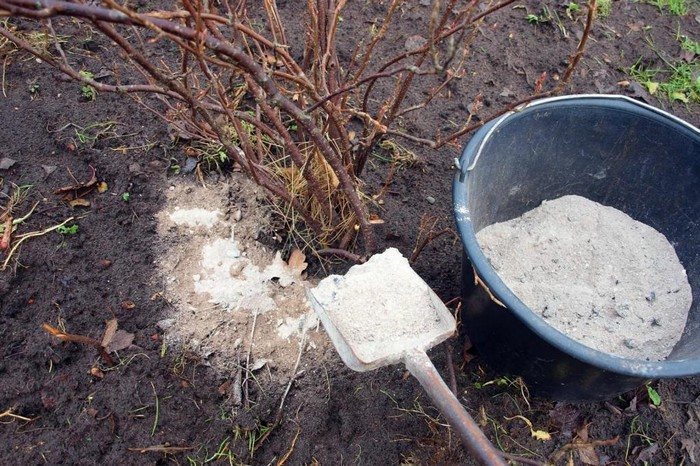
Mineral fertilizer
Feeding options:
- Use 15 g of potassium sulfate and 2 times more superphosphate. The granules are mixed and placed under the bush in dry form. Or dilute it in a bucket of water, and after dissolving, feed the bush.
- Ammonium nitrate (or urea) in a volume of 7–10 g is diluted with a bucket of water. Add 20 g of potassium sulfate and 40 g of superphosphate. After dissolving the granules, the soil is irrigated according to the following scheme: 5 liters for an adult plant, 1-2 liters for a young plant. Then the soil is mulched.
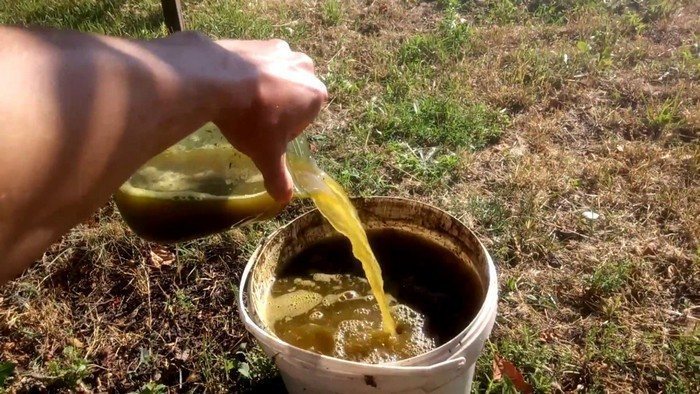
Folk remedy
Like any fruit bush, currants tolerate folk remedies for feeding well.
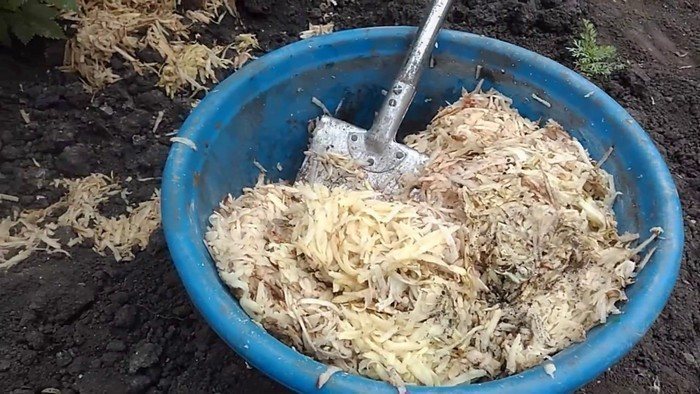
If you take a liter jar of potato peelings, pour a bucket of boiling water and leave for about 3-4 days, you will get a starch-containing fertilizer. Water at the root.This composition will have a positive impact on future yields.
Tips and proven recipes will help gardeners prepare for the winter and get a rich harvest in the new season.
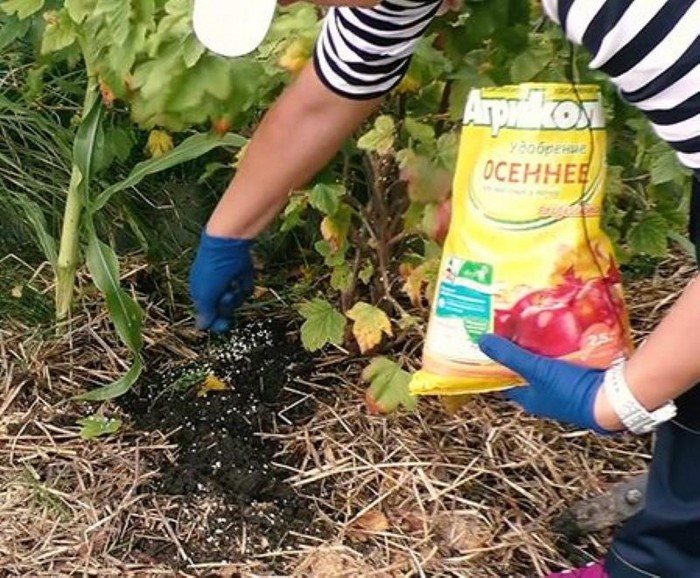
Although other agrotechnical stages also affect fruiting, good, proper fertilizing is the most important of them. It depends on it whether the currant will live and bear fruit or die on the vine.


